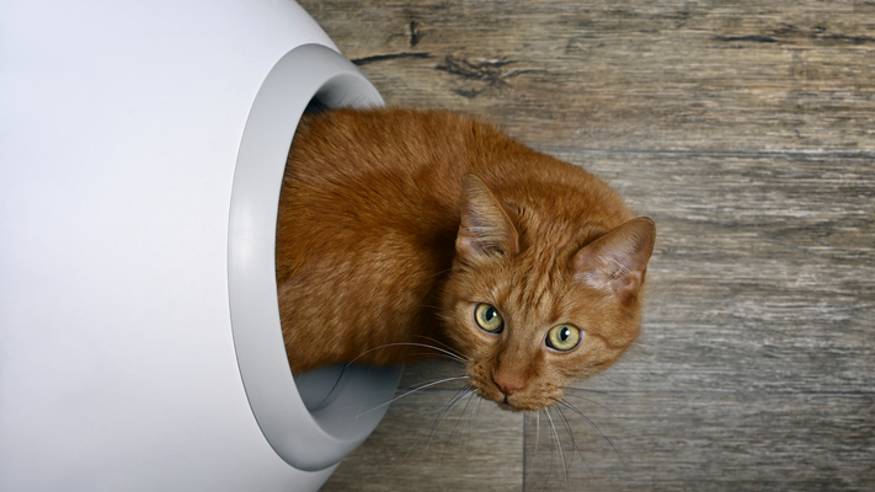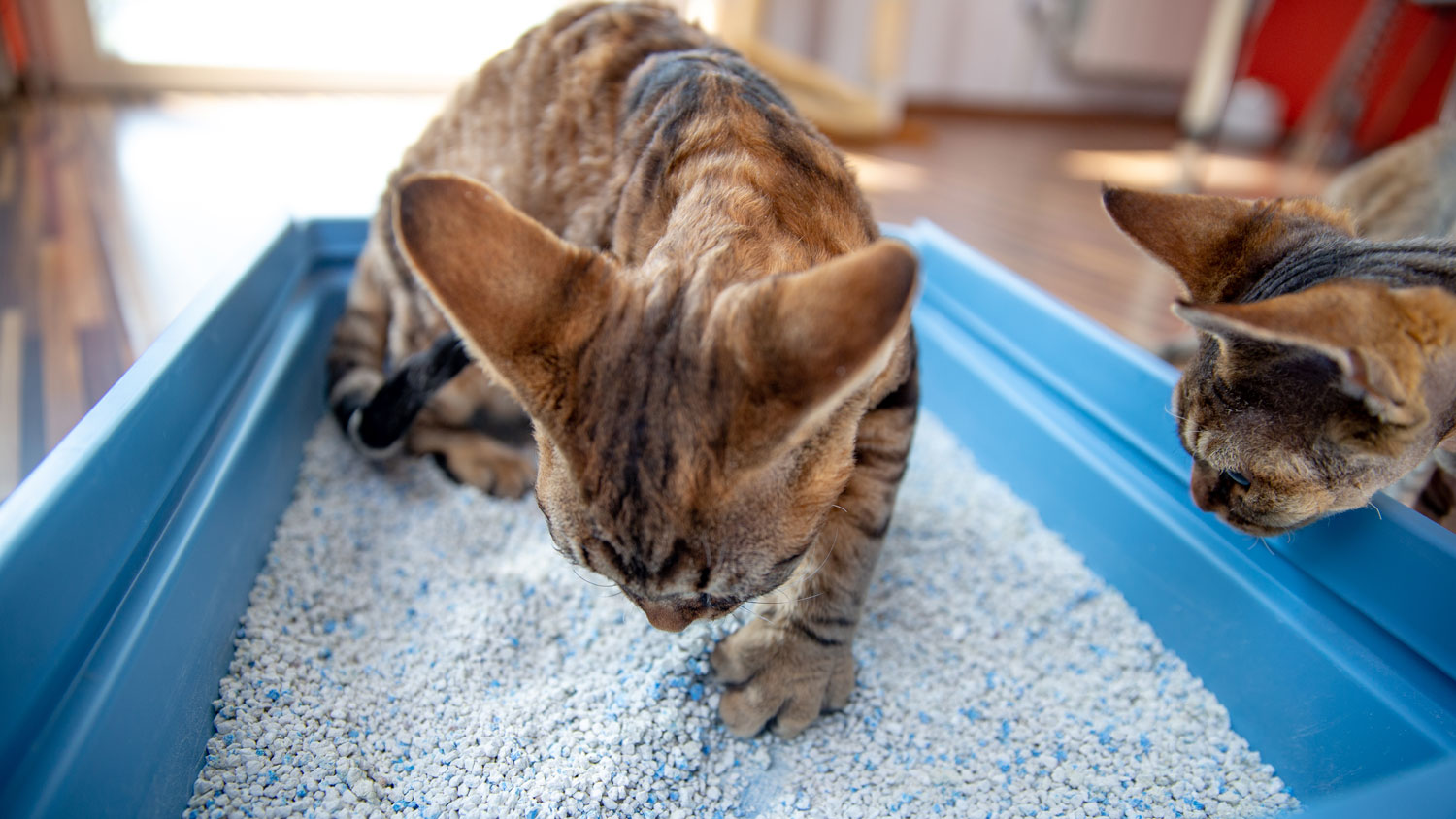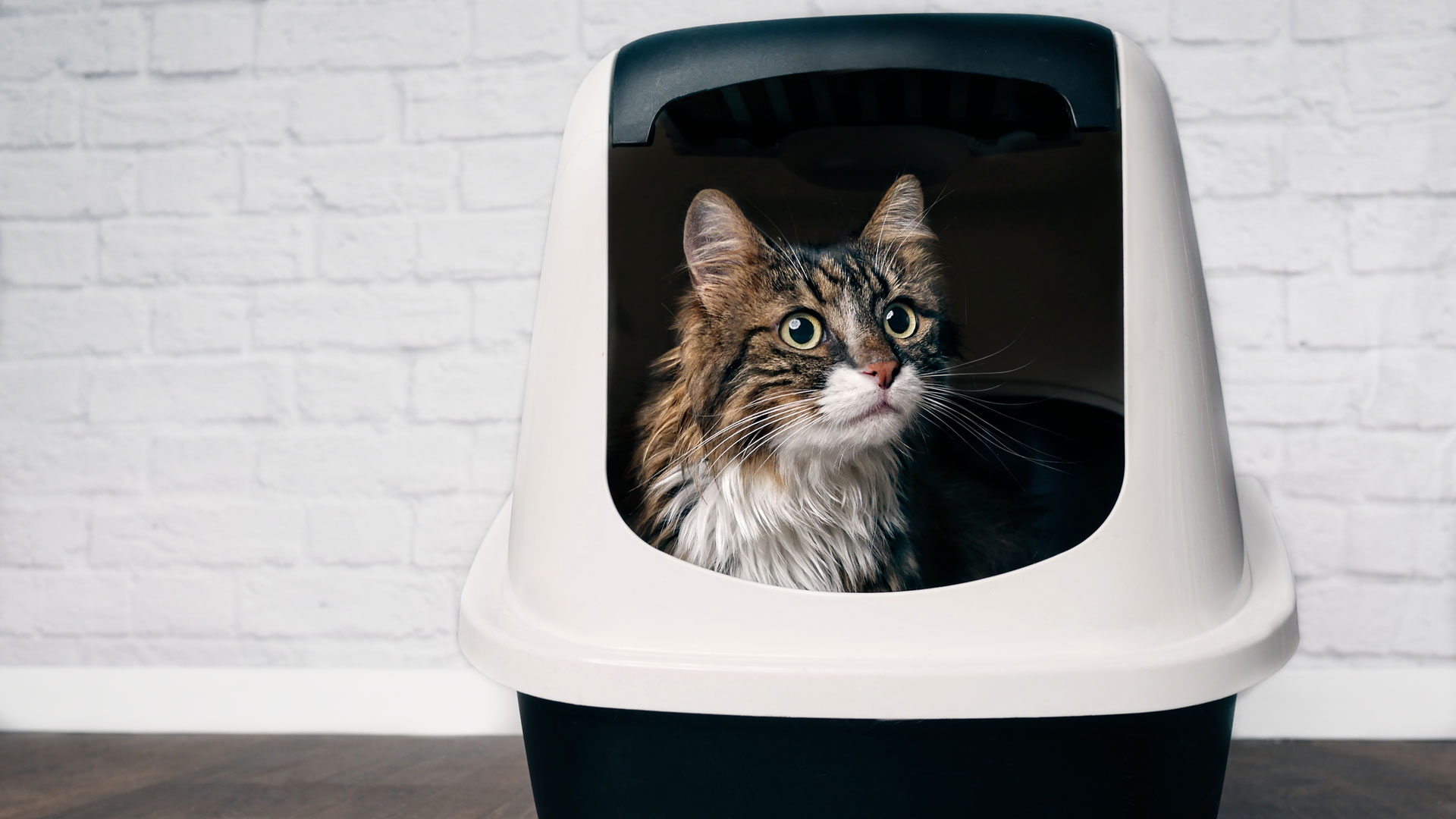Cat poop: Normal, constipation and diarrhea
When it comes to cat poop, do you know what’s normal? Read on to find out more!

Many owners are unsure what’s normal and what’s not when it comes to cat poop. Both cats and kittens can suffer from tummy troubles, so we’re going to explore normal cat poop as well as common digestive complaints so that you know what to look out for next time you clean the litter box.
What should normal cat poop look like?
Before we look at abnormal cat poop, it’s important to know what’s normal. A healthy cat should produce stools that are a uniform color, with no excess mucus. The exact shade may vary, but it is usually a dark brown color. The stool should be firm and have a clearly defined shape, with some visible cracks in it. It should be easy to scoop up with little or no residue left behind.
This type of stool would be graded a 2.5 out of 5 on a fecal scoring system. Conversely, a grade 1 stool would be very dry, hard and crumbly, indicating constipation, and a 5 would be a liquid puddle which is seen with diarrhea.
How many times a day should my cat poop?
The exact amount a cat poops depends on its diet and exercise levels, but most will pass stools once or twice a day. This is another good indicator of digestive health, as cats that are going less often could have issues, as well as those that are passing stools much more frequently.
If you’re interested in monitoring your cat, many of the best automatic litter boxes will sync with your phone and alert you each time your cat visits.

What are the causes of cat poop problems?
Broadly speaking there are two main categories of poop problems in cats. Cats can either have issues with not passing stools (constipation) or can have problems with passing stools too frequently (diarrhea). Let’s look at both in more detail.
Constipation in cats
Cat constipation describes a difficulty in passing stools or a lack of them altogether. Fecal material accumulates in the colon with your cat struggling to pass it.
Get the best advice, tips and top tech for your beloved Pets
If they do manage to pass stools these are usually very firm, dry nuggets. There can be a variety of causes for constipation in kittens and cats including:
- Dehydration – lack of fluid leads to dry, hard stools (could be secondary to kidney disease)
- Lack of exercise – being too sedentary
- Impaction – usually with hair in long haired-cats, or through eating a foreign body
- Tumors or growths – causing an obstruction, making passing stools tricky
- A nerve disorder – affecting the muscles that control the passage of stools
- Trauma to the pelvis – injuries may cause a narrowing in this area
- Hernia – a weakness in the muscle that could cause issues with stool transit
You should always get your cat checked out by a vet if they are constipated, as it could indicate an underlying health complaint.
All constipated cats will benefit from plenty of moisture in their diet, either through drinking or in their food. Encouraging gentle movement and exercise if they can manage it and the use of laxatives can also be helpful. Your vet will advise you further on treatment options.

Diarrhea in cats
Cats can suffer from loose stools, which may vary from a slight loss of shape to liquid puddles. Wet stools can indicate problems with your cat’s digestion, especially if your cat is toileting more frequently too. There are several reasons why your cat might have diarrhea, these include:
- A sudden change in diet – a sudden change of diet type or brand could affect your cat’s stomach
- Dietary indiscretion – eating something he shouldn’t have
- Infectious disease – viruses, bacterial infections and parasites can cause loose stools
- Inflammatory bowel disease – inflammation in the digestive tract
- Pancreatitis – inflammation of a small organ called the pancreas could lead to diarrhea
- Underlying health issues – thyroid problems or cancer could cause loose stools
If your cat is experiencing a mild self-limiting bout of tummy upset and is otherwise well, then you could try some bland food for a few days. Probiotic supplements can also be helpful to get things back on track.
However, if things aren’t resolving or if your cat has other symptoms like vomiting, inappetence, lethargy or blood in his stools then a trip to the vet is warranted.
Kittens with diarrhea can go downhill quite quickly so make sure you seek help sooner rather than later for them.

Cat stool color guide
Sometimes your cat may produce stools that are an unusual color. Let’s look at what this might mean:
- Brown The normal color for cat feces, different shades are possible though from dark brown to lighter.
- Black Very dark or black stools could indicate melaena, which describes digested blood in the feces. This poop may also be sticky and tar-like in appearance. A serious bleed in the upper digestive tract from a tumour, ulcer or clotting issue could cause this.
- Red If you see red streaks, then this is likely to be fresh blood in your cat's stool. This usually indicates a bleed lower down in the digestive tract, which may be due to an inflammatory condition like an infection or inflammatory bowel disease.
- Yellow or green Can be seen in feces that have passed too quickly through the digestive tract. Sometimes liver or pancreas conditions can contribute to colour changes in stools too.
- White White specks in your cat’s poop could indicate parasites; tapeworm segments may appear like this.
When to visit the vet
It’s important not to ignore any problems with your cat’s stools, as these are a good indicator of his overall health. If your cat is constipated and has been unable to pass stools for a day or two then get them checked out by a vet, as your pet is likely to be uncomfortable.
If you see blood in your cat’s stools or think they may have melaena then take them to a vet as soon as possible. This is also recommended if your cat is off their food, vomiting or lethargic.
Mild self-limiting cases of diarrhea are common though, with bland food (like cooked chicken and white fish) and probiotics helping to resolve this. But if your cat’s symptoms persist beyond a couple of days then you should seek help from your vet.
Your cat’s stools give you an insight into their digestive health. If things aren’t right then it’s worth getting your cat examined by your vet, particularly if they seem unwell or have blood in their stools. Don’t ignore the problem, prompt treatment usually leads to better outcomes, so get things checked out if you’re worried.
Read next: How to get a cat to use a litter box and Do cats fart? Or find out how to stop your cat pooping outside the litter box
Rebecca is a veterinary surgeon who graduated from the Royal Veterinary College in London in 2009. She enjoys medicine in particular and she is proud to have achieved a BSAVA postgraduate certificate in small animal medicine (with commendation) from Nottingham Trent University in 2021.
She has a wealth of experience in first opinion small animal practice, having done a mixture of day-to-day routine work, on-call emergency duties and managerial roles since 2009.
She writes on various feline and canine topics for the Veterinary Content Company and a freelance basis, including behavior, nutrition, and health. Outside of work and writing she enjoys walking her own dog, spending time with her young family and baking!

